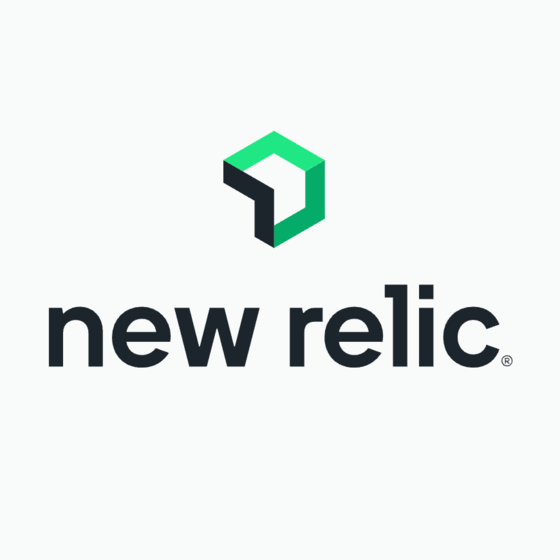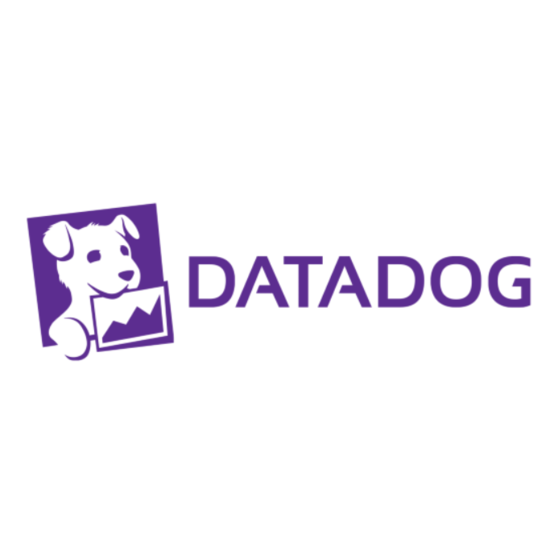Best Splunk Competitors Shortlist
Here’s my shortlist of the best Splunk competitors:
Our one-on-one guidance will help you find the perfect fit.
As someone who has delved deep into the Security Information and Event Management (SIEM) world, I understand the need for an SIEM solution that can effectively aggregate endpoint data from various sources, analyze user behavior, and provide actionable security analytics.
Splunk, an industry leader in this space, excels in assimilating machine-generated data, offering plugins for various data sources, behavior analytics, and providing a comprehensive platform for security operations or cybersecurity with notable threat detection and threat intelligence features.
However, only some SIEM platforms will be a perfect fit for some organizations, as factors like cost, specific use cases, or different data handling needs can push you to look for Splunk competitors.
What Is Splunk?
Splunk is a SIEM platform that helps you search, monitor, and analyze machine-generated data. It’s mainly used by IT teams, security analysts, and DevOps professionals who need to track system activity and respond to threats or issues quickly. Real-time monitoring, data indexing, and alerting features help your team make fast decisions, stay on top of incidents, and keep your systems healthy. Splunk gives your team a way to turn massive volumes of data into clear, usable insights.
Why Trust Our Software Reviews
We’ve been testing and reviewing SaaS development software since 2023. As tech experts ourselves, we know how critical and difficult it is to make the right decision when selecting software. We invest in deep research to help our audience make better software purchasing decisions.
We’ve tested more than 2,000 tools for different SaaS development use cases and written over 1,000 comprehensive software reviews. Learn how we stay transparent & check out our software review methodology.
Best Splunk Competitors Summary
This comparison chart summarizes pricing details for my top Splunk competitor selections to help you find the best one for your budget and business needs.
| Tool | Best For | Trial Info | Price | ||
|---|---|---|---|---|---|
| 1 | Best for integrated compliance & security features | Free demo available | Pricing upon request | Website | |
| 2 | Best for real-time data insights and anomaly detection | 14-day free trial | From $15/user/month (billed annually) | Website | |
| 3 | Best for AI-assisted cloud infrastructure monitoring | 15-day free trial + demo available | From $0.0001 | Website | |
| 4 | Best for automated hybrid infrastructure monitoring | Free trial available | From $3/resource/month | Website | |
| 5 | Best for application performance monitoring | Free plan + demo available | Pricing upon request | Website | |
| 6 | Best for end-to-end business transaction tracking | Free trial available | From $6/month (billed annually) | Website | |
| 7 | Best for full-stack observability and integration capabilities | 14-day free trial available | From $15/user/month | Website | |
| 8 | Best for cloud-native machine data analytics | 30-day free trial + free demo | From $15/user/month (billed annually) | Website | |
| 9 | Best for open-source network monitoring | Free trial available | Pricing upon request | Website | |
| 10 | Best for streamlined log management | Not available | From $12/user/month (min 5 seats) | Website |
-

Docker
Visit WebsiteThis is an aggregated rating for this tool including ratings from Crozdesk users and ratings from other sites.4.6 -

Pulumi
Visit WebsiteThis is an aggregated rating for this tool including ratings from Crozdesk users and ratings from other sites.4.8 -

GitHub Actions
Visit Website
Best Splunk Competitors Reviews
Below are my detailed summaries of the best Splunk Competitors that made it onto my shortlist. My reviews offer a detailed look at the key features, pros & cons, integrations, and ideal use cases of each tool to help you find the best one for you.
Best for integrated compliance & security features
ManageEngine OPM Plus is an all-in-one IT operations management platform that unifies network, infrastructure, and application monitoring across diverse environments. It provides full-stack observability, making it ideal for teams seeking end-to-end visibility with integrated compliance and security features.
Why it's a good Splunk competitor:
I picked ManageEngine OPM Plus because it combines performance monitoring, SIEM, and IT service management in a single platform. Its real-time insights, broad device compatibility, and deep integration with other ManageEngine tools offer a practical alternative to Splunk, especially for organizations looking for a cost-effective yet comprehensive solution.
Standout features & integrations:
Key features include bandwidth analytics with NetFlow and AppFlow support, distributed application tracing, firewall rule anomaly detection, and VoIP/WAN monitoring. OPM Plus also includes configuration compliance for HIPAA, PCI, and SOX, along with role-based access control. Integrations include Active Directory, Microsoft 365, Exchange management, OpManager, Site24x7, NetFlow Analyzer, Log360, ADAudit Plus, Endpoint Central, Patch Manager Plus, AssetExplorer, and ServiceDesk Plus.
Pros and cons
Pros:
- Supports IT scaling
- Instant notifications and alerts
- In-depth view of entire IT infrastructure
Cons:
- May have an initial learning curve for new users
- Configuring alarms can be challenging
Coralogix provides a cutting-edge log analytics platform that empowers businesses to extract actionable insights in real-time. It's built to offer top-tier anomaly detection, focusing on troubleshooting, monitoring, and security, securing its position as the best for real-time data insights and anomaly detection.
Pros and cons
Pros:
- Extensive platform integrations
- Advanced anomaly detection features
- Exceptional real-time data analysis
Cons:
- Additional base fee is required
- Requires technical expertise for setup and usage
- Higher pricing for larger data volumes
Dynatrace is an AI-powered, full-stack, and automated monitoring and analytics system. The tool provides insights into every aspect of your infrastructure, including servers, apps, and cloud systems. Its AI capabilities, particularly, set it apart for cloud infrastructure monitoring tasks.
Pros and cons
Pros:
- Integrates with various popular platforms
- Provides automated and intelligent observability
- Excellent AI-assisted monitoring capabilities
Cons:
- Customization options might be limited for certain use cases
- There can be a learning curve to fully utilize its features
- Slightly higher starting price point compared to some competitors
LogicMonitor is a cloud-based, automated IT performance monitoring platform. It is designed to provide comprehensive visibility into complex, hybrid infrastructures, which makes it ideal for automated hybrid infrastructure monitoring.
Pros and cons
Pros:
- Good range of integrations with popular services
- Comprehensive and unified dashboard for all IT metrics
- Provides automation for monitoring hybrid infrastructures
Cons:
- Requires a learning curve to fully utilize all features
- Might be overly complex for organizations with simpler infrastructures
- Base fee addition to user cost can be prohibitive for smaller organizations
New Relic is a comprehensive software analytics platform that offers real-time insights into your application's performance. It excels at tracing application issues back to their source, making it the top pick for application performance monitoring.
Pros and cons
Pros:
- Real-time user monitoring
- Extensive integration options
- Comprehensive application performance monitoring
Cons:
- Annual billing cycle might not suit all businesses
- Steeper learning curve for beginners
- High starting price
AppDynamics is an application performance management (APM) and IT operations analytics (ITOA) company. The platform is designed to monitor and track the performance of business transactions across multiple layers and tiers, making it ideal for end-to-end business transaction tracking.
Pros and cons
Pros:
- Robust integration options
- Comprehensive diagnostic capabilities
- Offers end-to-end business transaction tracking
Cons:
- Requires a learning curve to fully utilize all features
- Might be more complex than needed for smaller organizations
- Relatively high starting price (min 20 seats)
Datadog
Best for full-stack observability and integration capabilities
Datadog is a monitoring and analytics platform that brings together data from servers, containers, databases, and third-party services. It provides full-stack observability by unifying metrics, traces, and logs, thus serving as an excellent tool for businesses that need comprehensive integration capabilities.
Pros and cons
Pros:
- Real-time dashboards for instant visibility
- Comprehensive integrations with a variety of services
- Provides full-stack observability
Cons:
- Can become expensive as the number of monitored systems grow
- Some advanced features require separate billing
- The interface can be overwhelming for first-time users
Sumo Logic is a robust platform that specializes in machine data analytics. The tool is designed to collect, store, and analyze data, which makes it a preferred choice for companies looking for comprehensive analytics in a cloud-native environment.
Pros and cons
Pros:
- Robust integrations with major cloud platforms
- Extensive analytics capabilities
- Strong focus on cloud-native environments
Cons:
- The interface can be complex for beginners
- Might be overkill for companies without substantial data analytics needs
- High starting price might not be affordable for smaller organizations
Zabbix is an open-source monitoring solution designed to track, record, alert, and visualize data from different IT environments. Its emphasis on network monitoring and its cost-effective nature makes it a prime choice for organizations seeking an open-source network monitoring solution.
Pros and cons
Pros:
- Wide array of integrations possible
- Open-source and highly customizable
- Extensive network monitoring capabilities
Cons:
- User interface could be more intuitive
- Lack of official support, relies on community assistance
- May require technical expertise to set up and customize
Mezmo Log Analysis is a logging tool designed to simplify the log management process, making it more efficient and organized. It focuses on facilitating the often complex and scattered process of managing logs, aligning it with organizations seeking a more streamlined approach.
Pros and cons
Pros:
- Wide range of integrations
- Effective search capabilities
- User-friendly and intuitive interface
Cons:
- Relatively new, so less community support available
- Limited customization capabilities
- May lack advanced features found in more established tools
Other Splunk Competitors
Here are some additional Splunk competitors that didn’t make it onto my shortlist, but are still worth checking out:
- Logz.io
For AI-powered log analysis
- Elastic
For scalable search and data visualization
- Amazon Web Services (AWS)
For comprehensive cloud computing needs
- Sentry
Good for real-time error tracking and crash reporting
- SolarWinds
Good for network performance monitoring and diagnostics
- Alibaba Cloud
Good for scalable cloud services and solutions
- BMC
Good for IT service management and operations automation
- Epsagon
Good for distributed tracing for microservices
- Nexthink
Good for digital employee experience management
- Lakeside
Good for digital experience monitoring
- eG Innovations
Good for application performance monitoring and diagnostics
- ManageEngine
Good for integrated desktop and mobile device management
- Oracle
Good for large-scale database management
- Grafana Labs
Good for flexible and interactive data visualization
- VMware
Good for multi-cloud management and operations
- Broadcom
Good for end-to-end software and hardware solutions
- ServiceNow
Good for comprehensive IT service management
Related Reviews
Splunk Competitors Selection Criteria
In my journey to find the best Splunk competitors, I thoroughly tested and researched numerous monitoring tools. Having gone through over 20 tools, I honed in on a few key areas that stood out as crucial when evaluating these software solutions. Let me explain these criteria in more detail below:
Core Functionality:
- Log Management: The tool should be capable of collecting, storing, and analyzing a large volume of log data.
- Alerting: A good tool must provide real-time alerts for any anomaly or issue in your system.
- Data Visualizations: The tool should present data in easily understandable visual formats such as graphs and charts.
- Scalability: The tool should be able to scale as your data needs grow.
Key Features:
- Real-time Monitoring: This allows for immediate identification and mitigation of issues, reducing the impact on your system.
- Machine Learning: Tools that incorporate AI or machine learning can provide more advanced analytics and predictive capabilities.
- Data Ingestion: A robust tool should be capable of ingesting various data types and formats.
- Integration: The tool should integrate well with other systems in your IT environment.
Usability:
- User Interface: For log management solutions and monitoring tools, a clean, intuitive dashboard is crucial. The tool should present a high-level view of your system status, with the ability to drill down into detailed views as needed.
- Onboarding: The tool should offer comprehensive onboarding resources, including tutorials and guides, to get your team up to speed quickly.
- Customer Support: Fast, reliable customer support can make a huge difference, especially during critical system issues.
- Role-Based Access: The tool should offer role-based access control to ensure secure and appropriate usage. For instance, not every user needs to have access to all features or data within the tool.
- Documentation: As these tools can be complex, extensive, and easy-to-understand documentation is vital for helping users navigate the tool and its features.
Why Look for a Splunk Competitor?
Splunk is a powerful platform that collects, indexes, and analyzes machine data. This software is invaluable for businesses of all sizes, particularly those aiming to transform raw machine data into actionable insights for enhanced operational intelligence.
However, while Splunk excels in its arena, some users may seek alternatives for various reasons - perhaps they're after a more niche focus, require different pricing structures, or desire an interface that better suits their team's workflow. Therefore, finding a competitor to Splunk becomes a quest for a solution that caters more precisely to their unique needs and circumstances.
Splunk Key Features
Here are some of the key features of Splunk, to help you contrast and compare what alternative solutions offer:
- App integrations: You can extend Splunk’s use by adding pre-built apps for things like AWS, Microsoft, or Kubernetes.
- Real-time search and analysis: You can search and analyze logs as data comes in, helping your team spot issues fast.
- Custom alerts: You can set alerts to trigger when certain patterns show up, so you don’t have to monitor things manually.
- Data visualization tools: You can turn raw data into graphs and dashboards to make it easier for your team to understand trends.
- Machine learning toolkit: You can build models that detect patterns and unusual activity without needing to code everything from scratch.
- Log aggregation: Your team can pull logs from many sources into one place, which saves time when you’re trying to solve problems.
- Anomaly detection: You can automatically spot data that looks off, which helps catch security risks early.
- Flexible data inputs: You can feed in data from files, APIs, or cloud services—whatever works best for your setup.
- Role-based access control: You can manage who sees what, so your team keeps sensitive data secure.
Summary
In conclusion, selecting the best Splunk alternative requires a deep understanding of your organization's specific needs. The ideal tool should offer comprehensive log management software, real-time monitoring, robust data ingestion, and an array of integrations. Moreover, ease of use and strong customer support should be maintained.
Key Takeaways:
- Understand Your Needs: Every organization has unique requirements. I want you to know that understanding what you need from a log management and monitoring tool is the first step toward making an informed decision. This could range from advanced analytics capabilities to the need for specific integrations.
- Focus on Usability: An effective tool should be easy to use. Look for an intuitive dashboard, efficient onboarding resources, and reliable customer support to ensure adoption and use within your organization.
- Consider Scalability: Your data needs will grow over time. Hence, the tool you select should be able to scale with you, effortlessly handling larger volumes of data while maintaining the same level of performance.
What do you think?
I hope this guide helps you navigate the multitude of Splunk competitors. However, the technology landscape is vast and ever-evolving. If you think a tool should be on this list or one that you've had great success with, please do share it. I'd love to hear about your experiences and continue refining this guide to be as helpful as possible. Your suggestions and feedback are greatly welcomed!
























